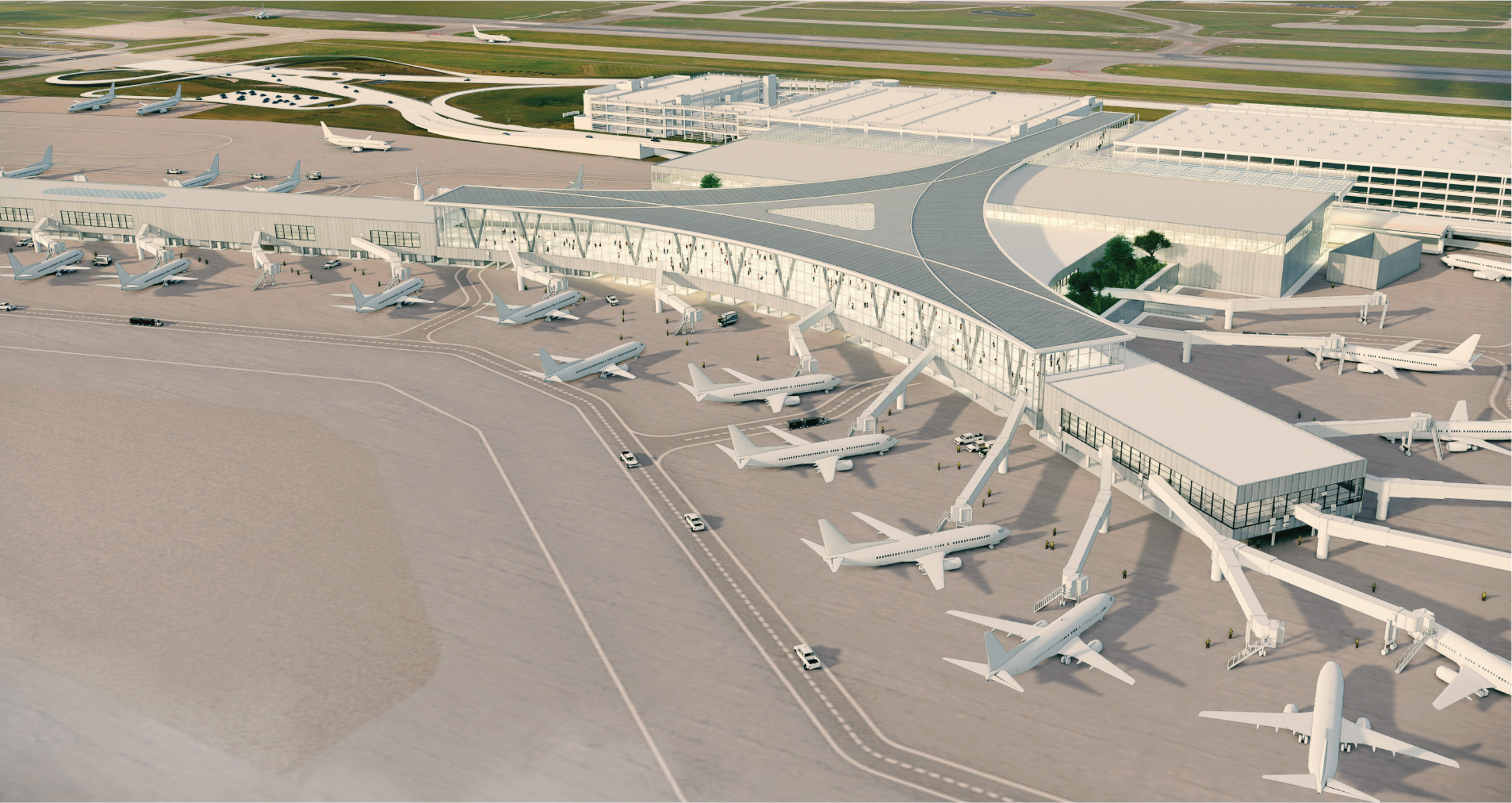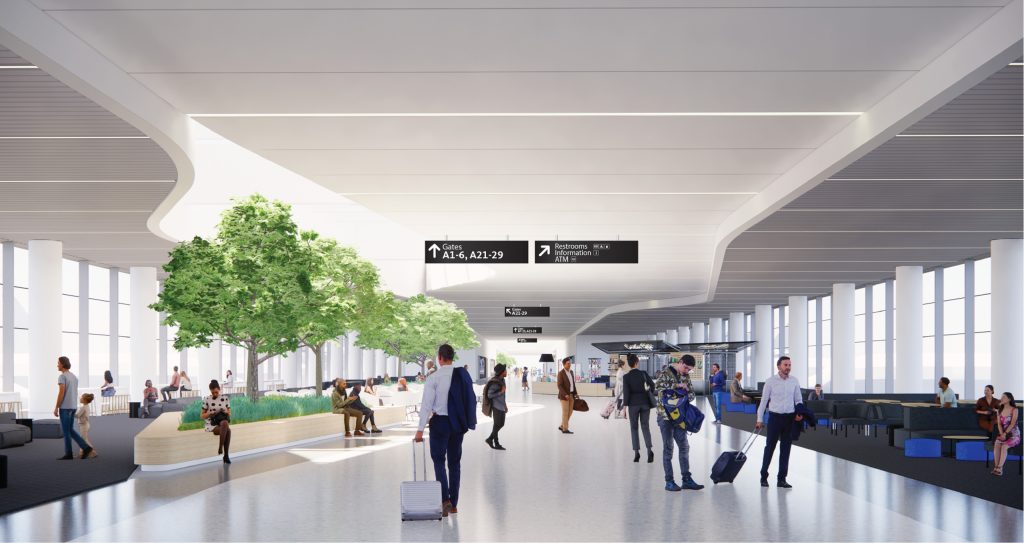
About the Project
Project Overview
The Columbus Regional Airport Authority (CRAA) awarded Hensel Phelps the $1.6 billion New Terminal project at the John Glenn Columbus International Airport. Hensel Phelps is teamed with Columbus-based general contractor Elford as an integrated partner. Hensel Phelps is the contracted Construction Manager at Risk to provide preconstruction and construction services for the New Terminal Project. The Hensel Phelps and Elford team is also partnered with several Ohio-based DBP/DBE-certified small businesses that are proving to be integral during the preconstruction phase of the project.
$1.6b
PROJECT VALUE
1,000,000
sQUARE fEET
Supports an 8m TO 13m+
iNCREASED PASSENGER CAPACITY
Scope
The project scope includes the replacement of an existing terminal that opened in 1958. It currently services more than eight million passengers annually, projected to increase to over 13 million annually.
The new 1,000,000 SF terminal project will include the building exterior consisting of a pedestrian bridge, entry canopy and headhouse, a marketplace immediately past security, the east and west concourses featuring 20-foot ceilings, baggage handling, passenger boarding bridges, the airfield, and landside roadway.
Following the completion of the new terminal project, the existing terminal will be demolished to allow room for future expansion. This exciting project represents Hensel Phelps’ first-ever project in the state of Ohio and expands the Company’s footprint into the Midwest.
Design and Architecture
Designed by Gensler, along with Columbus-based Moody Nolan and a team of other consultants, the new terminal at John Glenn Columbus International Airport will provide the region with a world-class facility to enhance the passenger experience, expand travel capabilities, increase functionality, and provide modern amenities.
The design of the airport terminal’s Y gesture mirrors the union of the Olentangy and Scioto Rivers, symbolizing the fluid pathways taken by travelers and the connectivity of the building as a regional hub. Additionally, the grand skylight references the sensation of the Midwestern horizon and expansive sky by creating an uplifting, luminescent space that allows for intuitive wayfinding. The terminal’s size matches the projected increase in passengers over the coming decades, and its design will allow for expansion opportunities in the years beyond.

Hosted by CRAA, CMH Next communicates details about the project’s purpose, community benefits, history, FAQ’s and news updates.
Timeline
Prequalified & Awarded Firms












